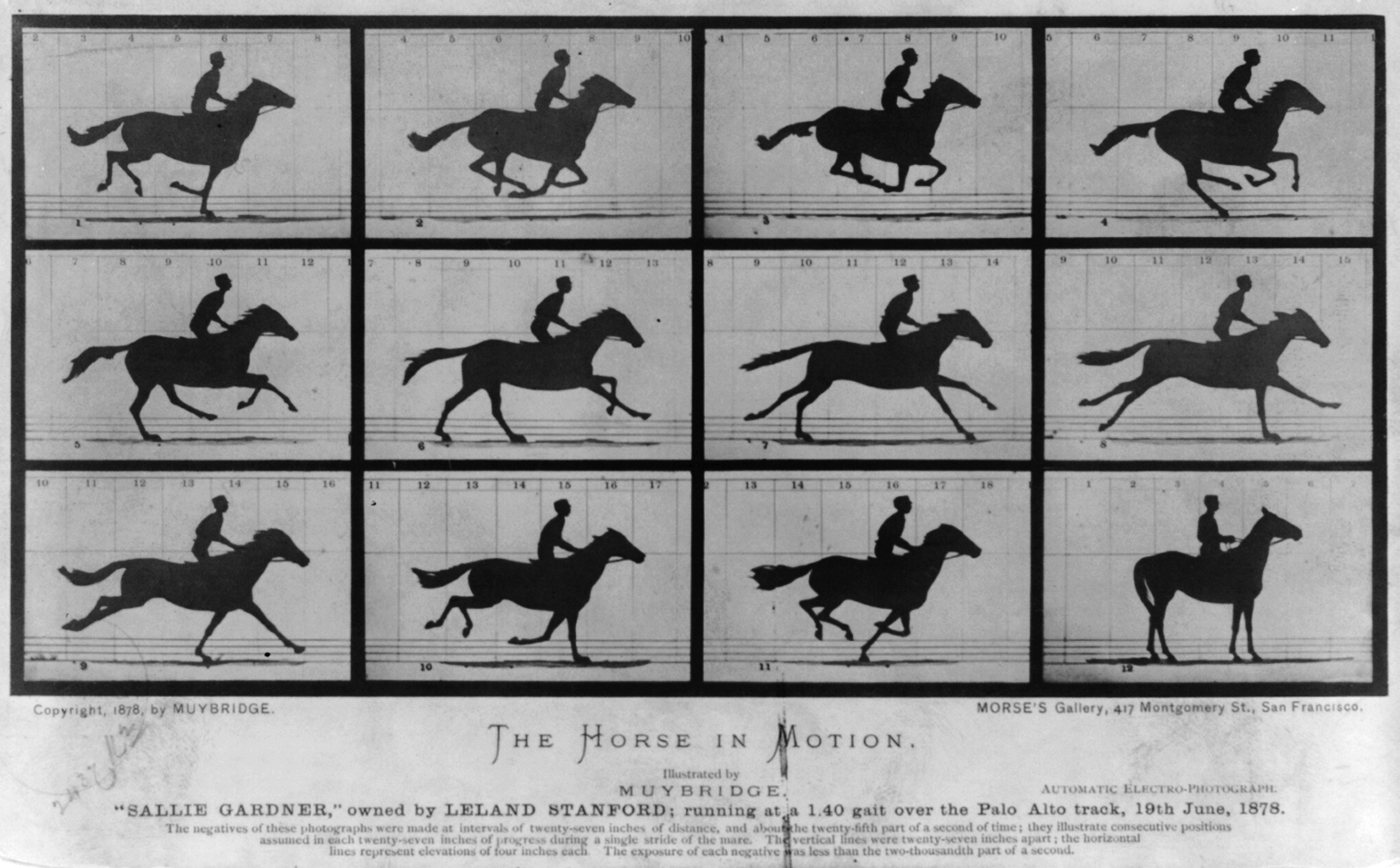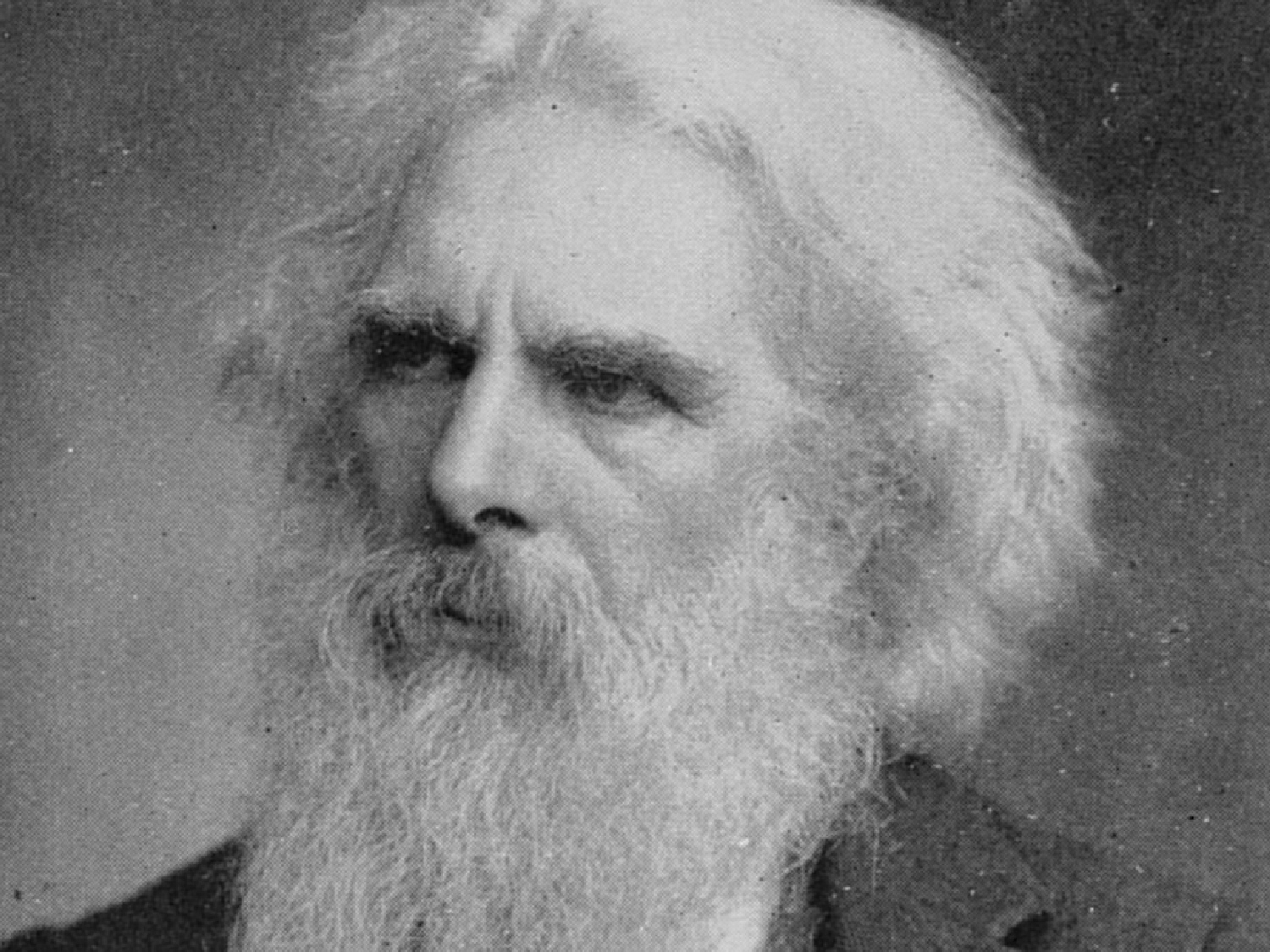Edward James Muggerridge born in 1830 in Kingston upon Thames, England. He moved back and forth between England and the USA several times, changing his name over the years from Muggerridge to Muggridge to Muygridge and, finally, to Eadweard Muybridge. Although he began his career in publishing, after 1867 he become increasingly involved in photography. His stereographic photographs from all over the country were renowned.
Throughout the ages prior to the rise of photography, artists had experienced difficulty in representing a trotting horse. One of the great unanswered questions was whether all four feet of a horse are off the ground at the same time while trotting; until the 1870s most artists painted horses in motion with one foot on the ground. In 1872 Leland Stanford, a former governor of California and future founder of Stanford University, approached Muybridge to ask whether he could help solve this conundrum.
Muybridge started experimenting with 12 cameras. The question was partly answered that year when Muybridge snapped a single photograph showing all four of the horse's feet not in contact with the ground. In 1878 he lined up cameras parallel to a track on Stanford's farm, attaching tiny tripwires (really, strings) through which the horse could run, thus triggering the camera shutter. He produced these twelve distinct images in sequence of Sallie in motion, showing clearly that the thoroughbred mare and her jockey Domm were at some moments entirely off the ground. Muybridge even invented a machine called the zoopraxiscope, with which the images could be presented in sequence, as one would later do with filmstrips and a projector.
Muybridge died in 1904. In 1982, the composer Philip Glass created a media performance (a chamber opera) called The Photographer in honour of Muybridge’s work. In 2012, on the 182nd anniversary of Muybridge's birth, he was the subject of a very different form of artistic tribute — an animated Google Doodle.
— Erik


 Eadweard Muybridge
Eadweard Muybridge